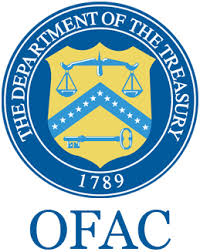OFAC
OFAC, the Sanctions
US Sanctions History
US has a long history of using sanctions, including the Non-Importation Act of 1806 and Embargo Act of 1807, which preceded War of 1812.
Treasury Department’s Office of Foreign Funds Control (FFC) established in 1940 to administer World War II sanctions.
OFAC created in 1950 following Chinese entry into Korean War and Chinese and North Korean assets were blocked
The Office of Foreign Assets Control (OFAC) of the US Department of the Treasury administers and enforces economic and trade sanctions based on US foreign policy and national security goals against targeted foreign countries and regimes, terrorists, international narcotics traffickers, those engaged in activities related to the proliferation of weapons of mass destruction, and other threats to the national security, foreign policy or economy of the United States.
OFAC acts under Presidential national emergency powers, as well as authority granted by specific legislation, to impose controls on transactions and freeze assets under US jurisdiction.
Many of the sanctions are based on United Nations and other international mandates, are multilateral in scope, and involve close cooperation with allied governments.
OFAC’s Mission
OFAC administers and enforces US economic sanctions programs primarily against countries and groups of individuals, such as terrorists and narcotics traffickers.
The sanctions can be comprehensive or targeted, using the blocking of assets and trade restrictions to accomplish foreign policy and national security goals
OFAC legal authorities and types of sanctions programs
Trading with the Enemy Act, 50 U.S.C. App. §§ 1-44 (“TWEA”)
Authority for Cuba sanctions
International Emergency Economic Powers Act, 50 U.S.C. §§ 1701-1706 (“IEEPA”)
Authority for most other OFAC sanctions programs
Foreign Narcotics Kingpin Designation Act, 21 U.S.C. §§ 1901-08
Other laws passed by Congress, such as CISADA
These laws implemented through:
Presidential Executive Orders
Treasury Department Regulations codified at 31 C.F.R. Parts 501-598
Types of US Sanctions Programs
Comprehensive Sanctions Programs
- Contain broad export/import prohibitions targeting a country or geographic region.
- Programs often “block” a sanctioned country’s government.
- Exemption typically apply to these programs.
- Current sanctions programs that are “comprehensive” include:
- Iran, North Korea, Cuba, Crimea region of Ukraine, Syria
Sectoral Sanctions Programs
- Prohibits particular types or categories of transactions with specified entities.
- The specified entities are not “blocked.”
- Sectoral sanctions programs are used in Ukraine/Russia and Venezuela.
- Transactions related to new debt of specified entities
- Transactions related to energy exploration activities in Russia of specified entities (SSI List)
Targeted/List Based Sanctions Programs
- Include asset blocking measures targeting individuals and entities identified on OFAC’s SDN List.
- “Blocking” includes prohibitions on dealing with blocked persons or transactions/dealing in the property interests of blocked persons.
- “Blocking” includes prohibitions on the provision and/or receipt of goods, services, or funds to and/or from a blocked person or property interest of a blocked person.
China is perceived as the main new challenge/ threat due to the world dominance seeking attitude.
We will boost all initiatives to promote the culture of Export Compliance as essential to do business “playing by the rules” to improve international relationships and security.
EIFEC Office in Washington D.C and in Hong Kong assist operators and institutions to keep up to date any compliance determination.
For more information


